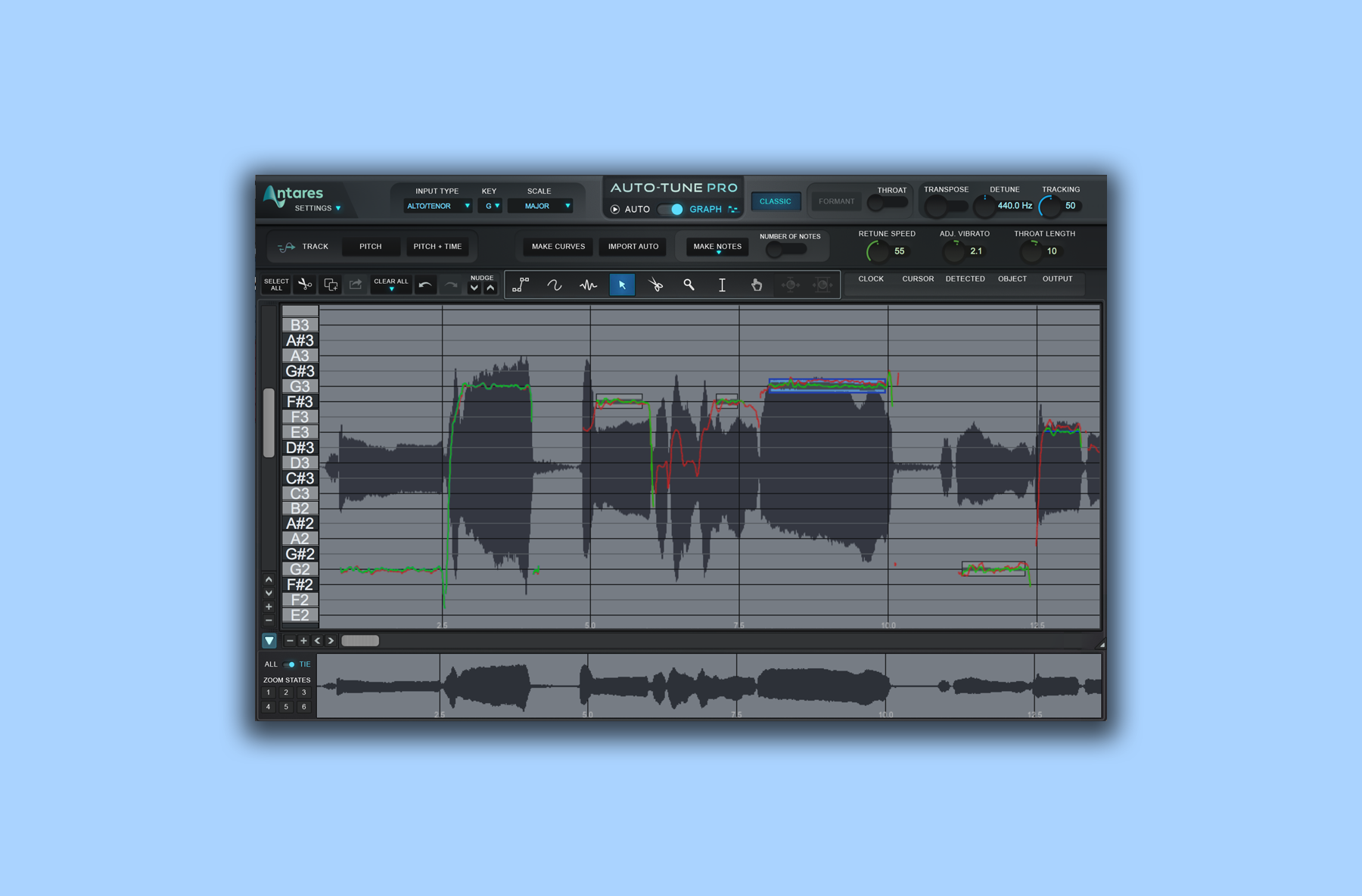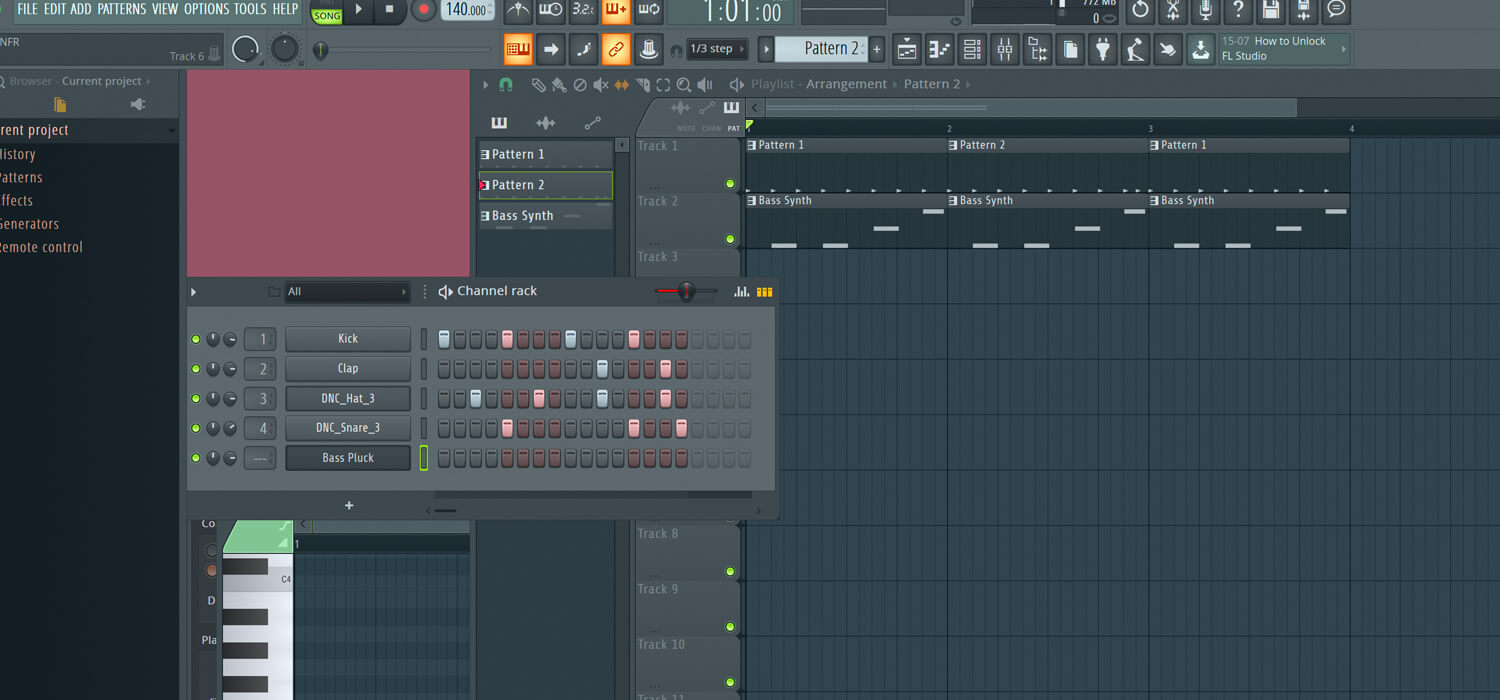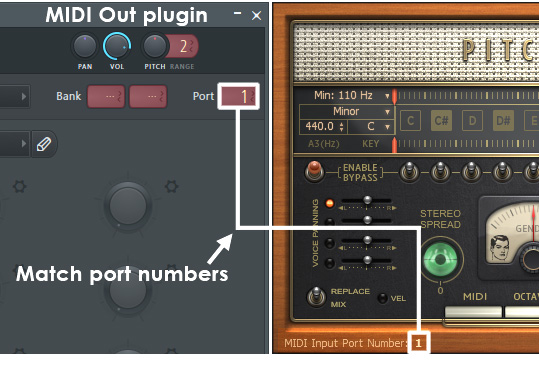FL Studio is a bit of programming, intends to enable you to alter music with expert accuracy and quality. It was once known as Fruity Loops, yet it has developed into an application equipped for complete sound altering. Tuner is a visual indicator for the state of tune of monophonic audio inputs. Tuner is perfect for use with guitars, brass and woodwind. Vocalists can get in-tune or use Tuner for pitch training. If you are looking for a real-time pitch correction plugin see Pitcher. If you are looking to post-correct recorded audio, see Newtone.
Article Content
Digital Audio Workstation Bias (DAW Bias for short) is real, and it’s a problem. Notable signs of someone with DAW Bias are: blaming the DAW for the music made in that DAW, making sweeping statements about the capabilities of a DAW (without spending time to actually learn it), and randomly cursing people out on the internet for not using their DAW of choice.
The most common and one of the most damaging forms of DAW Bias is FL Studio Bias. This is marked by the belief that only amateurs and people without talent use FL Studio, and is usually accompanied by being a low-key hater of Hip-Hop and EDM. Countless smash hit records have been made in FL Studio. It’s a great tool in all forms of electronic production, including Music For Film, Experimental Rock, and of course Hip-Hop, EDM and Electronica.
However, behind many biases are a grain of truth. DAWs are complex and reading manuals is boring. This leads to a lot of mistakes that are simple to fix, but often go unchecked. I mix a lot of records that were produced in FL Studio and there’s a few stand out mistakes I think need to be addressed.
Help end DAW/FL Studio Bias today!
Mistake 1: Clipping Your Master Channel

Let’s be honest, we all want our productions to be more thumpy, and a big part of that is making the playback level loud and proud. However, there is a good way to do this, and a not-so-good way to do this. The most common mistake I see is people overloading either their individual channels, or their master channel.
What does overloading mean? In the digital world we have a level ceiling, and once a sound exceeds that volume level it distorts. While we get the signal louder by turning it up, up, and up, we also lose punch and create a tonal quality that is usually worse than what we started with.
Unfortunately, it’s very easy to do this. Why? Because most of our drum samples are starting out normalized to maximum volume. Drum sample producers want their drums to appear as loud as possible, so they maximize the level of the sample. That means when we program this sample into FL Studio, there is no more room to turn it up without distorting!
Deceptively, FL Studio’s internal channels use 32 bit depth which is a scalar amplitude system. This means that within the program your sounds won’t clip. However, once you export to a fixed bit depth like 16 or 24, or convert your export at 32 to an mp3, any overs suddenly become clips. If you end up in the red it won’t be a problem inside FL but could be pretty gnarly once printed.
Solution: Turn your sample level down right at the beginning and turn your monitoring level up if you want that thump while you’re producing. By doing this, you leave yourself room to turn things up or down. Watch for those little red squares at the top of your channels. If they show up, that means you’ve overloaded the system.
But how do you make the playback loud? On your master channel place a device called a Limiter and use that to turn up your levels. The limiter will prevent clipping. And while it may seem counterintuitive, by turning things down at the very beginning you will actually have an easier time getting things even louder at the end.
Mistake 2: Ignoring Velocity, Time Offset and Swing
FL Studio has a ton of capability — even within the primary sequencer itself. But alas, many aspiring producers don’t go even a few steps further to explore these capabilities. While I don’t think it’s necessary to learn every nuance of FL Studio (although … why not?), I think there are three that are an absolute must when producing music: Velocity, Time Offset and Swing.
Music is dynamic — meaning it changes. If everything hits exactly the same, exactly on the beat, it sounds like robots made it. Which in some circumstances can be ok. Freezepop has made an entire subgenre of their own from strictly quantized, robotic sounding music. The perfect sequencing of Muse’s “Madness” is effective. And the hi-hat rolls in Trap kind of work, somehow. However, most music benefits from dynamics and pocket (changes in level and timing).
By default, FL will put a hit at a designated velocity on the exact timing of a beat. But if you open up the sequencer window you can find that all of this is adjustable. Just by doing something as simple as drawing a contrast in velocity between your “big beats” (the really important drum hits you want to accent) and “inside beats” (the less important ones that just help the groove along) can make a profound difference.
Making some micro-timing adjustments can give the record an exciting feel. If you want something relaxed and groovy like the kind of Hip-Hop we like to smoke wee … err … relax to, drag those snares ever so slightly late. If you want something really upbeat and exciting, put whatever is on the second quarter note (probably a snare/clap) exactly on grid or a little late, and put whatever is on the fourth quarter note (probably also a snare/clap) ever so slightly early. And I’m talking just subtly enough so that you feel it, not so much hear it.

Congrats, you’re in a whole new world of thinking now.
It’s also worth playing with the Swing slider. Just mess with it, you’ll hear what it does. There’s a whole new world of potential grooves out there. Swing Trap? Somebody better do it, or I will.
Mistake 3: Stagnant Arrangements

Music is progressive. If you start at point A, go to point A, and then end at point A, you haven’t told a story. You’ve just repeated a sentence. No one is trying to hear that. People want arc, drama and excitement. Don’t make a two bar loop, copy it eight times, copy it four more times with one new element on top of it, and then go back to the original loop eight more times and call it a verse – chorus – verse. It’s 2017 — c’mon now.
Create variations of your original loop and bring them in and out during the verse. When you go from the verse to the chorus, put in something to build tension and make the listener want that chorus to kick in. Don’t forget an intro and maybe a bridge. Even if you’re just making a beat and there’s no lyrics yet, give the lyricist some energy to go off of. Make a format to help them tell their story!

Mistake 4: Missing The MIDI Functions
FL Studio is centered around its wonderful step sequencer. It also has MIDI capability that allows you to plug in a keyboard and play a part in real time. The best producers know this and take full advantage of being able to both play live and program by sequence.
Even if we go under the hood and meticulously sculpt every note velocity and bit of timing, it still doesn’t account for all the possibilities one can create by simply playing a part in real time.
Mistake 5: Not Optimizing Your Export
After spending hours to days to weeks producing a song, don’t drop dead at the finish line! When exporting, we want the absolute highest quality file we can print out. For this I would just straight up copy these settings:
- Under “Project Type” select “Full Song” and “Leave Remainder”.
- Select “Wav” and under “Wav Bit Depth” select 24-bit. I generally recommend not printing 32-bit float unless you will be doing further treatment to the track yourself — like if you are going to pull the file back into another DAW to do your own mastering for example. Very few audio playback systems accept 32-float and will either reject the file or convert it to a non-floating bit depth. Consider a 16-bit version if your distribution website or digital platform specifies 16-bit as a requirement and there won’t be any mastering done outside of FL Studio prior to uploading, or if you are printing to a CD.
- Under “Quality” select the highest resampling rate you can pick. Currently that number is 512. Enable “HQ For All Plugins” and “Disable Max Polyphony”. If you are exporting to 24 or 16 bits, enable “Dithering” as well.
Mistake 6: No “Re-Recording” Mix or No Individual Trackouts
This one is for folks who are selling instrumentals online. When advertising your production on your sales page, I completely advise making a heavily compressed, pumped up, loud version of the instrumental. Your potential customers don’t understand the process of production, they just know what they hear and they expect the record to be loud. However, when it comes time to record the vocals for the production, that’s an entirely different story.
In order to get the vocals to blend well with the music, whoever is recording and mixing needs space in the record. If the record is slammed, whether through compression, limiting or hard-clipping the master channel — there is no more room. In order to make the vocals work, the engineer will have to make concessions. And again, counterintuitively, the final product will probably be less loud than it would have been had the engineer been given a less compressed file to begin with.

Once a beat is purchased, make an alternate version that is less compressed to help the process. Your name is going on this record and over the long term, everything that can help the success of the song benefits you!
You know what’s better than a less compressed mix? The complete individual trackouts of each audio element.
This one takes a bit of judgement. If you don’t know whose hands the instrumental is going to end up in for mixing, you may want to stick with the 2-track (just the beat, without the trackouts). However, if you know that a badass engineer will be handling the mixdown, give us the versatility to make the record the best it can be.
In order to do this, under “Miscellaneous” in the Export menu, select “Split Mixer Tracks”.
Now, again, here’s a bit of subjectivity. There is also an option labeled “Enable Insert Effects”. With that selected, all the processing like EQ and compression you have on your sounds will be printed into the trackouts. Personally, I’m an advocate for enabling that button. It’s your song and your sound. Mix engineers are not here to reinvent your music — we’re here to make it sound incredible. As long as you like what you did, you’ll love what you get back. However, if you are new to producing or unsure of your choices in effects, it’s ok to leave them off.
With these things in mind, FL Studio is every bit as good (if not better in some regards) as any DAW out there. So go make your music and let haters stand in the dark.
A full-fledged audio workstation for your PC
FL Studio is a full-fledged digital audio workstation, which has been in business for more than two decades. The program comes with a range of tools to help you compose, edit, and mix music. Currently, FL Studio is being used by numerous high-profile DJs and sound artists, making it one of the most popular audio software in the world. Compared to LMMS and WavePad, FL Studio comes with a simpler interface, making it a good choice for beginners. The platform is available for Windows as well as Mac devices.
Unlike some other programs, this DAW download features VSTs and synthesizers like Sytrus. The tool comes with multiple effects and instruments. In addition to this, its functionalities are extendable with various other instruments. The moment you start using the interface, you’ll love the modern and well-structured appeal of the layout. The only drawback with the audio editing tool is the occasional crashes and lags.
VSTs, synthesizers, and multiple audio editing tools
FL Studio is a full-fledged audio editing software. As a complete digital audio workstation, it’s the perfect choice for music production. Backed with almost two decades of production, the program offers everything you need to compose, edit, master, mix, and record high-quality music. Used by creative professionals around the world, FL Studio has become the leading audio editing software.
What about the interface?
The DAW download has a simple interface, which is easy to read and understand. Despite the complex and comprehensive functionalities, the UI is scalable and can be seamlessly used on multiple displays. Additionally, the program supports multi-touch, and runs smoothly on high-end touchscreen laptops and desktops. In fact, the software can be used as a physical audio mixing board and lets you move various faders simultaneously.
What about the features?
If you start from the left side, you’ll first notice the browser with a range of presets, audio clips, instruments, project files, and other material to create or edit music. The program’s Channel Rack contains sound generators used in the project.
If you want to check out all the audio clips in use, you can access the Pattern List. There’s a Playlist function, which serves as the main arranging window and looks familiar to the interface of other popular DAWs. The software comes with a step sequencer and piano roll, both of which can be used to edit more precisely.
The meter bridge and mixing console views can be easily set to multiple sizes. These windows can be hidden or adjusted as per your requirements. In case you’ve used an older version of FL Studio, expect to get yourself reoriented, since the audio software comes with various new features.
Fruit Loops Auto Tunes
What’s new in the latest version?
The latest version of the audio editing program comes with time signatures. Users can set these for the playlists as well as patterns. In fact, the tool lets you play multiple signatures over one another. FL Studio features multiple basic templates, which let you create new tracks without much hassle. In some templates, the Channel Rack auto-populates standard 909-style claps, kicks, and hi-hats.
In some instances, FL Studio automatically straps a limiter across the master bus, allowing you to immediately pump mix levels. The revamped interface has been given some nice touches, including a glowing song position marker. Similarly, when you open up the 3X OSC synthesizer, you can see the knobs moving to reset automatically. The sharp-looking meter bridge precisely responds to incoming audio.
With the easy manipulation and automation techniques of the program, you can easily make the sound quite exciting and clear. The digital audio workstation comes with various synthesizer presets, which seem high-passed. This makes mixing dance music clearer and easier for even newbies.
While the audio software experiences some unexpected lags, you can use this DAW download to produce amazing music and sounds. The pre-loaded demos sound engaging and polished, and can be used as inspiration to create, edit, and mix audio files.
Fruit Loops 20 Auto Tune
Our take
Out of all the digital audio workstations available online, FL Studio proves to be a great choice. Compared to the competition, the platform stands apart in terms of navigation, UI, and price.
Should you download it?
Whether you’re a beginner or an experienced sound artist, this audio editing tool is an excellent choice. It comes with multiple purchasing options, which are tailor-made for different audience sets. The design is sleek and the software offers a range of functionalities to help you create, edit, and mix music.
Highs
How To Get Autotune On Fruity Loops
- Comes with a simple interface
- Features various presets
- Offers multiple features
- Comes with bundled options
Fruity Loops Autotune
FL Studiofor Windows
Fruit Loops Auto Tuner
20.8.3.2304